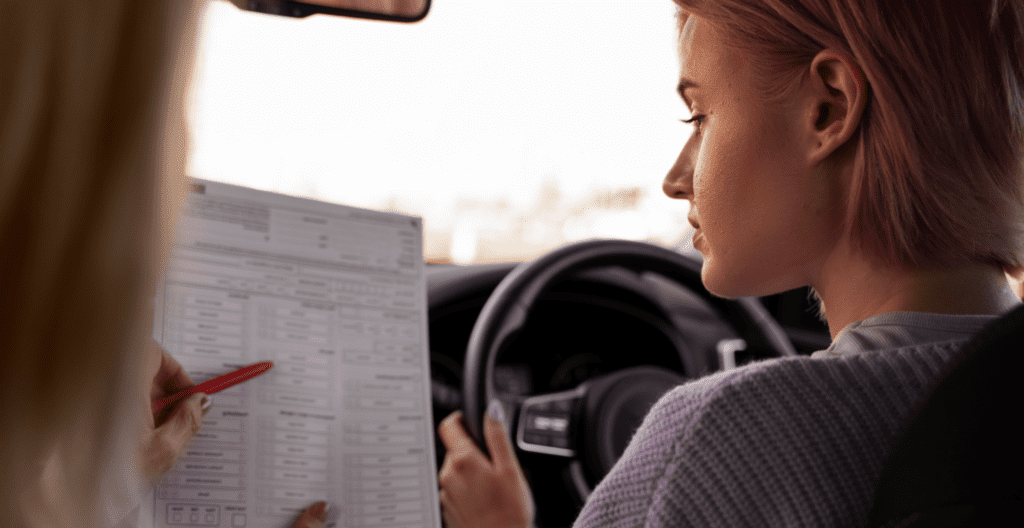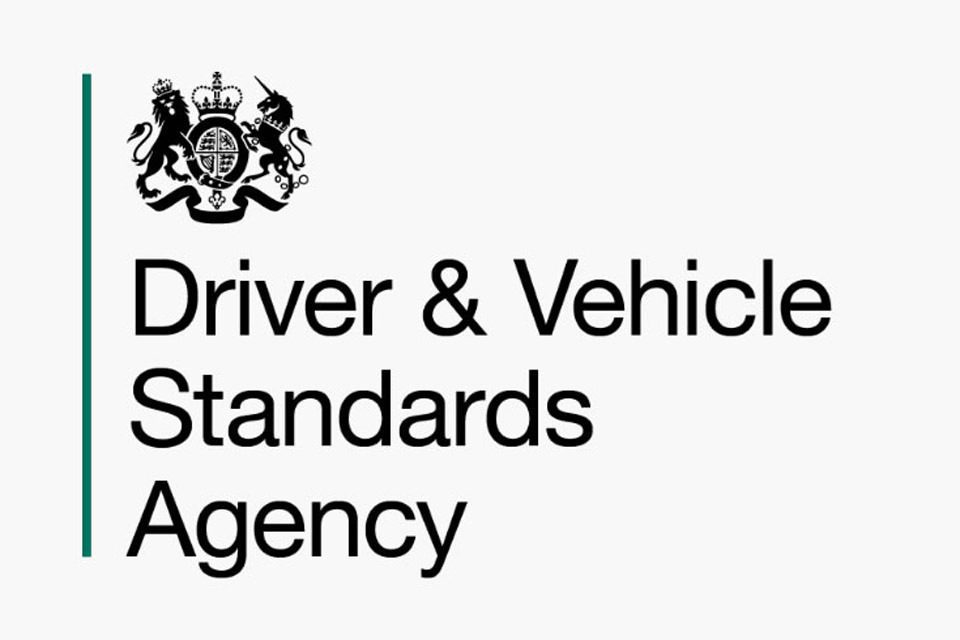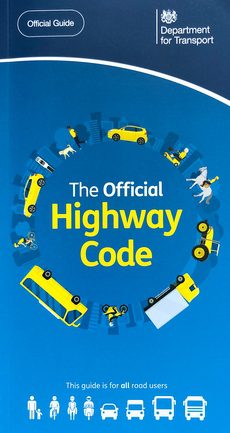
Introduction to the Practical Driving Test
Overview of the UK Driving Test
The UK driving test is designed to assess a candidate’s ability to operate a vehicle safely and competently in a variety of road and traffic conditions.
The practical driving test is a critical component of the licensing process and is administered by the Driver and Vehicle Standards Agency (DVSA).

It follows the completion of the theory test, which covers road signs, rules, and hazard perception.
Importance of the Practical Test in the Licensing Process
The practical test is pivotal as it directly evaluates driving skills, unlike the theory test which assesses knowledge.
Passing the practical test demonstrates that a driver has the hands-on capability to control a vehicle and make sound decisions on the road, under real-world conditions.
This is crucial for ensuring that all drivers have the necessary skills to contribute to road safety.
Recent Changes and Updates to the Test
Recent updates to the practical driving test include the introduction of independent driving segments designed to reflect real-life driving conditions.
Candidates must follow directions from a sat nav or traffic signs, handle high-speed environments, and navigate complex junctions and roundabouts.
These changes aim to prepare new drivers for a wider range of driving scenarios, increasing their confidence and safety on the road.
Preparing for the Practical Driving Test
Essential Skills to Master Before the Test
To prepare for the practical driving test, learners must master several essential skills:
- Vehicle control: This includes smooth steering, braking, and accelerating, as well as correct use of the clutch and gears.
- Road awareness: Being alert to the surroundings and able to react appropriately to other road users and changing traffic conditions.
- Manoeuvres: Ability to perform standard manoeuvres like parallel parking, reversing into a parking bay, and pulling up on the right-hand side of the road.
Understanding the Test Criteria and Scoring
The practical test is scored based on the candidate’s ability to drive safely and competently. Examiners look for control, awareness, and accurate execution of requested manoeuvres. Faults are categorised as:
- Minor faults: These do not present immediate danger but could potentially become serious.
- Serious faults: A mistake that could potentially be dangerous.
- Dangerous faults: Actions that put the driver, examiner, or public in actual danger.
A candidate will pass the test if they commit no more than 15 minor faults and no serious or dangerous faults.
Read about the most common driving test faults and how to avoid them
Resources and Tools for Effective Preparation
There are numerous resources available to help candidates prepare for the practical test:
- Driving instructors: Professional instructors can provide personalised training and feedback.
- Online tutorials and videos: These can offer visual guidance on performing manoeuvres and handling different driving conditions.
- Practice tests: Mock tests with an instructor can simulate the test experience and help reduce anxiety.
- Driving apps: Many apps offer route planning, hazard perception practice, and other useful tools to aid learning.
On the Day of the Test
What to Bring to Your Driving Test
On the day of your practical driving test, it is essential to bring the following items:
- Provisional driving licence: Your provisional licence is required to prove your eligibility to take the test.
- Theory test pass certificate: Although not always asked for, it’s good practice to bring this along as it shows you have passed the theory component.
- A suitable vehicle: The vehicle must be roadworthy, properly insured, and equipped with L-plates (except if it’s a driving school car).
Expectations Upon Arriving at the Test Centre
Upon arrival at the test centre, you should check in with the reception and wait for your examiner. It’s important to arrive on time, as being late can lead to the cancellation of your test.
The test centre will have specific waiting areas for candidates, and you might find it useful to review your notes or relax as you wait for your slot.
Initial Procedures and Identity Verification
The test begins with some initial procedures:
- Identity verification: The examiner will check your provisional licence to confirm your identity.
- Eyesight check: You’ll be asked to read a number plate from a distance of 20 metres. If you fail this check, your test will not proceed.
- Vehicle safety: You might be asked to identify where the windscreen wash reservoir is located and demonstrate that the car’s lights and indicators are working.
The Test Components
“Show Me, Tell Me” Vehicle Safety Questions
The “Show Me, Tell Me“ questions are designed to assess your knowledge of basic vehicle safety. At the start of the test, the examiner will ask one ‘tell me’ question, where you explain how you’d perform a safety task.
During the drive, you will get a ‘show me’ question, where you must demonstrate a safety task, like operating the windscreen wipers while driving.
Independent Driving Section of the Test
The independent driving section lasts for about 20 minutes and requires you to drive by either following a series of verbal directions, traffic signs, or a satnav.
This part of the test assesses your ability to drive safely while making decisions independently, without guidance from the examiner.
Manoeuvres You May Be Asked to Perform
During the test, you may be asked to perform several manoeuvres, which could include:
- Parallel parking: Either behind a parked car or into a parking bay.
- Reversing: You might need to pull up on the right-hand side of the road, reverse for two car lengths, and then rejoin traffic.
- Emergency stop: One in three tests will include an emergency stop exercise.
These components are crucial as they evaluate your control of the vehicle, awareness of your surroundings, and ability to execute safe driving practices under various scenarios.
Preparing well for each segment and understanding what to expect will help you navigate the test successfully and enhance your confidence on the day.
Adhering to The Highway Code
Key Rules and Regulations to Remember
When preparing for the practical driving test, a thorough understanding of The Highway Code is essential. This includes knowing the right-of-way rules, speed limits, and traffic signs.
Rules regarding the use of seat belts, mobile phones, and other safety measures are also crucial. Candidates must demonstrate their ability to apply these rules consistently to ensure safe driving practices.

Common mistakes made during the test related to The Highway Code include:
- Failing to observe speed limits: Either by exceeding the limit or driving too slowly.
- Incorrect use of signals: Forgetting to signal or signalling at inappropriate times.
- Not adhering to road markings: Such as stopping over zebra crossings or not maintaining lane discipline.
Avoiding these mistakes requires not only knowledge but also practical application of The Highway Code during the driving test.
The Importance of Road Signs and Markings
Understanding and obeying road signs and markings is critical for safe driving and is heavily assessed during the practical test.
Signs indicating pedestrian crossings, roundabouts, and changes in speed limits must be adhered to strictly.
Road markings that guide lane usage, right of way at junctions, and stopping positions at traffic lights are also key elements that the examiner will check.
Common Challenges and How to Overcome Them
Dealing with Nerves and Test Anxiety
Test anxiety is a common issue for many learners. Overcoming it involves:
- Preparation: Being well-prepared can boost confidence.
- Mock tests: Taking several mock tests with an instructor can help simulate the test conditions and reduce anxiety.
- Relaxation techniques: Practising deep breathing or mindfulness before the test can calm nerves.
Handling Complex Traffic Situations
Complex traffic situations, such as navigating busy roundabouts, merging onto dual carriageways, or handling large intersections, can be challenging. To handle these effectively:
- Stay aware: Constantly scan the road for signs, signals, and movements of other road users.
- Keep a safe following distance: This provides you time to react to unforeseen events.
- Stay calm: Maintain a calm demeanour, which can positively influence your decision-making process.
Strategies for Maintaining Focus Throughout the Test
Maintaining focus throughout the driving test is crucial. Strategies include:
- Avoiding distractions: Keep the radio off and focus solely on the task of driving.
- Regular practice: Regular and varied driving practice helps build stamina and concentration.
- Mental rehearsal: Visualising a successful driving test can prepare the mind to execute the task with more focus.
After the Test
Immediate Feedback and Result Explanation
Immediately after the practical driving test, the examiner will provide feedback on your performance. This includes an explanation of any faults or errors made during the test, categorised as either minor, serious, or dangerous.
Understanding this feedback is crucial, as it helps identify areas of strength and aspects of driving that may need improvement.
Steps to Take if You Pass
If you pass the practical driving test, the examiner will:
- Issue a pass certificate.
- Arrange for your full driving licence to be sent to you. As a new driver, you should consider enrolling in additional courses, like the Pass Plus, which can help you gain experience in different driving conditions and potentially reduce insurance premiums.
Steps to Take if You Fail and How to Prepare for a Retake
If you do not pass the test:
- Analyse the examiner’s feedback to understand what went wrong.
- Book another test. Most learners wait at least two weeks before retaking the test to have adequate time to improve.
- Continue practising, focusing on areas of weakness, and consider additional lessons with a driving instructor.
Tips from the Experts
Advice from Experienced Driving Instructors
Experienced driving instructors often emphasise:
- Consistent practice: Regular driving in a variety of conditions and locations.
- Understanding the test route: Familiarise yourself with the areas around the test centre.
- Calmness and confidence: These are crucial for handling the pressures of the test.
Tips from Previous Test Takers
Previous test takers frequently suggest:
- Getting a good night’s sleep before the test day to ensure you are rested and alert.
- Arriving early at the test centre to have ample time to acclimatise and relax.
- Trusting your training and focusing on the driving task, not the outcome.
Advanced Driving Techniques to Practice Post-Test
After passing the test, continue to improve your driving skills by learning advanced techniques:
- Defensive driving: Understanding the fundamentals of defensive driving can significantly enhance road safety.
- Eco-driving: Learning to drive in a more fuel-efficient manner.
- High-performance driving courses: Though not necessary for everyone, these can be beneficial for those interested in more technical driving skills.
By following these expert tips and continuing to focus on self-improvement even after passing the practical driving test, you can develop into a skilled, confident, and safe driver, well-equipped to handle the complexities of today’s road environments.
Frequently asked questions
The practical driving test is an examination that assesses your ability to drive a vehicle safely and competently in various road and traffic conditions.
It follows the theory test and is the final step before obtaining a full UK driving licence.
The test typically lasts about 40 minutes. This includes the time taken for the eyesight check, safety questions, and the driving portion of the test.
These are vehicle safety questions you’ll be asked during the practical test. The ‘Tell Me’ question is asked at the beginning of the test and requires a verbal explanation.
The ‘Show Me’ question is asked while you are driving, requiring you to demonstrate a particular vehicle operation, such as turning on the windscreen wipers.
Yes, you can use your own car for the test as long as it meets the DVSA’s requirements, which include being roadworthy, insured for a driving test, displaying L-plates, and having no warning lights displayed.
If you make a mistake, the type of fault (minor, serious, or dangerous) will determine if it affects your test result. Accumulating too many minor faults (more than 15) or committing any serious or dangerous faults will result in a fail.
If you fail the test, review the examiner’s feedback to understand your weaknesses, continue practising, and address the specific areas of concern.
It’s advisable to take additional driving lessons if necessary before booking another test.
You can take the test again after 10 working days. This interval is designed to give you enough time to improve your driving skills.
Common reasons include poor observation at junctions, failing to use mirrors effectively, incorrect use of signals, inadequate control over the vehicle, and not responding appropriately to road signs.
You can book a test online through the DVSA’s official website or by phone (0300 200 1122). You’ll need your UK driving licence number and a debit or credit card to pay the test fee of £62.
After passing, consider taking the Pass Plus scheme, which covers aspects of driving not extensively dealt with during the standard driving test, such as night driving and motorway driving. This can also help reduce car insurance premiums.


